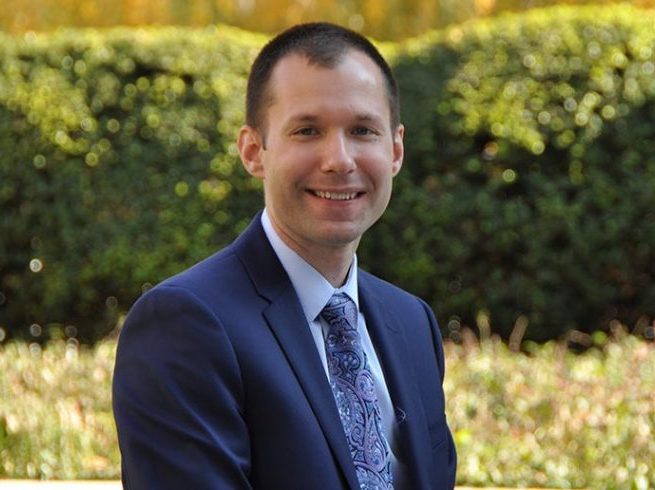
By Katie Meyer
Right now, around 60,000 homeless people sleep in New York City shelters every night. It is estimated that thousands more sleep on the streets (though it is difficult to gauge exactly how many), according to the most recent statistics from New York’s Coalition for the Homeless. It is a large problem for a large city. But undaunted by these numbers, a group of Fordham students has set out to prove that it is possible to make a difference, even one person at a time.
These students are participants in a program called Sock Saturday. They meet up one Saturday every month and, as the organization’s name suggests, head into Manhattan armed with white tube socks, ready to hand them out to any homeless people they happen to find on the street.
It is a simple program, but the thinking behind it is not. Whenever they give a pair of socks to someone, Sock Saturday volunteers make an effort to make a personal connection. They smile, ask his or her name and ask how they are doing. Sometimes they sit together, and if the person wants to, they talk for a while. Dan Krug, GSB ’14, originally started the program, and says making a connection with people is one of the most important parts of the initiative.
“Having a conversation with someone on the street just seems like a very human and natural interaction,” he said. “Just saying someone’s name and asking them how they’re doing can go a really long way.” In some cases, Krug says the impact of this interaction can be profound. “One gentleman told me no one had said his name in over a year and that it just felt good to be acknowledged as a human being,” Krug said. That does not mean the socks themselves are not important. As Krug explains, it is hard to grasp the importance of socks until you do not have any.
“Anyone who has ever spent time on their feet knows feet get sweaty. Wearing the same pair of socks can cause trench foot, fungal infection and are also just generally unpleasant.”
Krug first came across the idea of Sock Saturday while he was still in high school. He found a blog called Invisible People, which was run by a formerly homeless man named Mark Horvath. Krug eventually met Horvath, and decided he would hand out socks, as Horvath had been. He kept it up as he entered his freshman year at Fordham, and said he “guilt tripped” his friends into going along with him.
After joining the Global Outreach Board as a sophomore, he started an official program with GO!’s support. He was also able to set up a steady sock supply through donations from family members and old high school, and the program ran steadily until Krug’s graduation last year.
After he left Fordham, Krug was unsure if the program could last. That is where Sock Saturday’s current leaders come in.
Christa Ceconi and Dayna Ryan, both GSB ’17, and Emma Kilroy, FCRH ’17, all heard about Sock Saturday during their freshman years and got involved. At the end of the spring semester Ceconi, who had heard Krug was graduating, expressed interest in taking over the program after his departure.
However, the renewed Sock Saturday program did not really take off until Ryan and Kilroy looked into resurrecting Sock Saturday themselves. They found out Ceconi was also interested, and the three joined forces. It was a “happy coincidence,” Kilroy said.
And it is a coincidence that has led to a strong partnership among the three. They held two sessions last semester, and so far have held one this year. They plan to have about one every month with Krug’s family and school still providing sock donations, they have steady support.
The leaders estimate they get around 20 to 30 participants for every session. A lot of those participants come courtesy of the Residence Hall Association — RAs have begun attending Sock Saturday as programs with their residents. Many of the participants are underclassmen, but Ceconi says they also get several interested juniors and seniors.
Sessions generally follow the same blueprint Krug used when he ran the program: the leaders and volunteers all meet up on Saturday morning outside of the GO! offices and go over what to expect. Ceconi, Ryan and Kilroy explain the rationale behind the program, and the importance of forming a connection with the homeless people they meet. As Kilroy explained, it is a different kind of service than, for example, working at a soup kitchen or homeless shelter. Newcomers to the program often do not know what to expect.
“People who tend to come into homeless shelters and soup kitchens, their eyes are often downcast…they’re very embarrassed to have to come into a shelter and get food,” she said. “The difference with Sock Saturday is that you’re picking someone out and being like, ‘I’m here to help you, just you.’ Not to do this general thing, this ‘good deed’ for the day.”
The students who have gotten involved have been receptive to Sock Saturday’s message and mission, Ryan said. The program’s leaders hope their work does not end there.
They are currently working on expanding the organization even further, with initiatives like sponsoring speakers, doing workshops with volunteers, handing out sandwiches along with socks and possibly getting involved with the Hope Count. Eventually, they want to become an official club, a process they have just started.
“We’ve just been having brainstorms…I feel like there’s so much more we could do,” Kilroy said.






































































































































































































